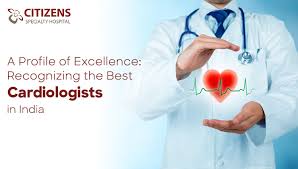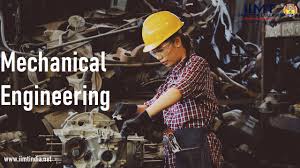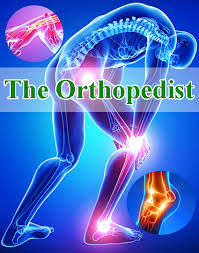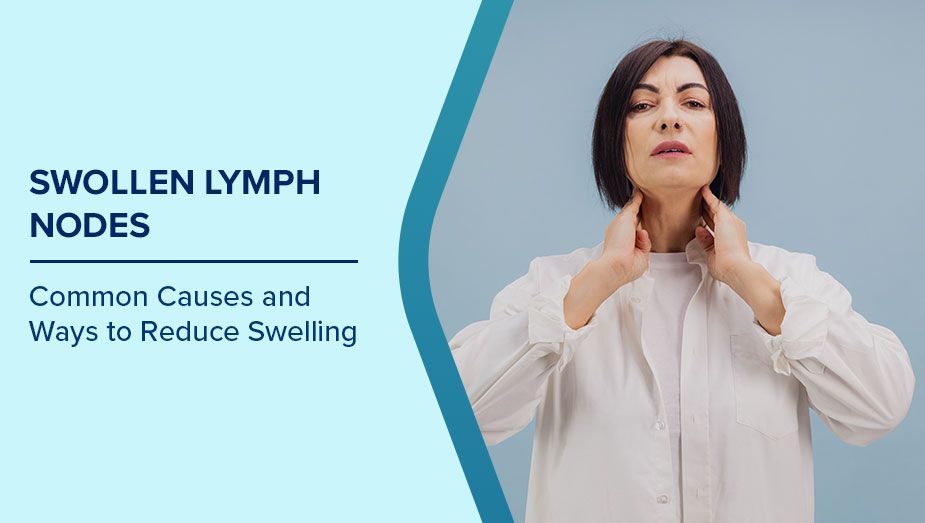Abstract The initial segment unfolds by expounding upon the foundational concepts of nanotechnology, tracing its historical evolution, delving into its normative framework of reference, and elucidating its diverse applications across various sectors, navigating the inherent challenges associated with nanotechnology. You have full access to this open access chapter 1 Historical Approach to New Materials The nanotechnology revolution is making a ground-breaking impact on diverse science, engineering, and commercial sectors, including the construction industry. The physical and chemical properties unique to the nanoscale can lead to remarkable efficacy enhancement in (photo)catalysis, (thermal and electrical) conductivity, mechanical strength, and optical sensitivity, enabling applications such as catalysts, electronic and energy storage devices, advanced mechanical materials, and sensors. The earliest ideas surrounding nanotechnology can be traced back to the pioneering insights of physicist Richard Feynman (Nobel Prize in physics 1965), who, in his seminal lecture titled “There is a lot of room in the background”, presented at the annual meeting of the American Physical Society in 1959. Within his discourse, Feynman eloquently expressed: “Most cells are tiny, but they are very active, they make substances, they move, they contort, and they do a lot of wonderful things, all on a small scale. They also store information. Let’s consider the possibility that we, too, could make entities so small that they did whatever we wanted, that we could make an object that maneuverer at that level”. The word nanotechnology was first used by Norio Taniguchi in 1974, to designate a nanoscale production technique, which involves processes of separation, consolidation, and deformation of materials with the help of a single atom or a single molecule. But it was not really disseminated until 1986 by Eric Drexler in his book “Creation Machines”, in which he described the bases for the construction of atom-by-atom materials that “would open the doors to a technological development unprecedented in the history of mankind, which would make it possible to overcome disease and death, make intergalactic trips and have almost infinite material resources”. Louis Brus, working at AT&T Bell Laboratories, discovered colloidal semiconductor nanocrystals, called quantum dots, that led him to be recognized as one of the leading researchers in the field of nanoscience in the early 1980s. In 1985 Sir Harold W. Kroto, Richard E. Smalley and Robert F. Curl, Jr. (Nobel Prize in Chemistry 1996) obtained hollow carbon molecules that formed a closed cage by using a laser to vaporize graphite rods in a helium gas atmosphere. The capsule comprised 60 carbon atoms intricately bonded through both single and double bonds, meticulously arranged to fashion a hollow sphere characterized by 12 pentagonal and 20 hexagonal faces. Such nanostructures, exemplified by this configuration, are commonly referred to as fullerenes. Japanese physicist Sumio Iijima in 1991 discovered and detailed the atomic structure and helical shape of single- and multi-walled carbon nanotubes [2]. In 1993, at the Massachusetts Institute of Technology, Moungi Bawendi and his collaborators developed a synthesis of nanocrystals obtaining semiconductor colloidal quantum dots, this nanotechnology being one of the first to be integrated with the biological sciences. Since 1998 chemical engineer Thomas Webster worked on the design, synthesis and evaluation of nanomaterials for various medical applications. This included self-assembled chemistries, nanoparticles, nanotubes and nanostructured surfaces. Some of the medical applications included inhibiting the growth of bacteria, controlling inflammation, and promoting tissue growth [6, 7]. In the new century multiple contributions have been generated, among them are the gold nanocapsules for cancer treatment of Medicine and Surgery; nanoscale assembled devices similar to DNA and a methodology to generate nanoscale patterns and structures. 2 Nanotechnology: Basic Concepts Nanotechnology has been a recognized field of inquiry since the previous century, notably propelled into the scientific Richard P. Feynman during his aforementioned seminal lecture “There’s Plenty of Room at the Bottom” in 1959. Since then, the landscape of nanotechnology has been marked by a succession of groundbreaking advancements. This domain has witnessed the synthesis and manipulation of materials at the nanoscale level, ushering in a new era of scientific exploration and technological innovation . Central to the realm of nanotechnology are nanoparticles (NPs), a diverse class of materials encompassing particulate substances characterized by at least one dimension measuring less than 100 nm. The significance of these nanostructures became evident as researchers uncovered their capacity to profoundly influence the physiochemical properties of materials. Indeed, the size of nanoparticles emerged as a critical factor, intricately shaping phenomena such as optical properties, and offering tantalizing prospects for tailored material functionalities . As aforementioned, nanoparticles are complex entities, consisting of three distinct layers: (a) The surface layer, which can be functionalized with various small molecules, metal ions, surfactants, and polymers, (b) the shell layer, a chemically distinct material from the core in all aspects, and (c) the core, which is essentially the central portion of the NP and usually refers the NP itself [10]. Due to these remarkable attributes, researchers across diverse fields have been captivated by the potential of these materials, sparking widespread interest and enthusiasm among multidisciplinary practitioners [9]. NPs are extensively categorized into different classes, delineated by their morphology, dimensions, and chemical attributes. Notable among these classifications are the following well-recognized categories, distinguished based on their distinct physical and chemical characteristics : • Carbon-based NPs Fullerenes and carbon nanotubes (CNTs) stand out as prominent categories within the realm of carbon-based nanoparticles. Fullerenes are characterized by their globular hollow cage-like structures, comprising various allotropic forms of carbon. These nanostructures have garnered substantial commercial attention owing to their exceptional electrical conductivity, impressive strength, unique structural attributes, high electron affinity, and remarkable versatility [11]. Given their distinctive physical, chemical, and mechanical properties, these materials find utility not only in their pristine form but also as integral components in nanocomposites, facilitating a myriad of commercial applications. These applications include utilization as fillers, efficient gas adsorbents for environmental remediation, and support mediums for a diverse array of inorganic and organic catalysts. • Metal NPs Metal nanoparticles are exclusively composed of metal precursors. Harnessing the intrinsic properties of these metals, metal NPs exhibit distinct optoelectrical behaviour attributed to their well-documented localized surface plasmon resonance (LSPR) phenomenon. Among the alkali and noble metals, including copper (Cu), silver (Ag), and gold (Au), these NPs display a broad absorption band within the visible range of the electromagnetic solar spectrum [12]. The controlled synthesis of metal NPs, with precise manipulation of their facets, sizes, and shapes, is paramount in contemporary materials science and pivotal in the development of cutting-edge materials, enabling tailored properties and functionalities that cater to diverse technological applications [12]. Metal nanoparticles, owing to their sophisticated optical properties, are instrumental across various research domains. Notably, gold nanoparticles (NPs) coatings are extensively employed in the realm of scanning electron microscopy (SEM), in order to augment the electronic beam, thereby enhancing the signal-to-noise ratio and overall quality of SEM images . • Ceramics NPs Ceramic nanoparticles represent a class of inorganic non-metallic solids, synthesized through processes involving intense heat followed by controlled cooling. Exhibiting a diverse array of morphologies including amorphous, polycrystalline, dense, porous, or hollow structures, these nanoparticles have garnered significant interest from researchers. Their versatile properties render them indispensable in various applications such as catalysis, photocatalysis, the photodegradation of dyes, and imaging applications . • Semiconductor NPs Semiconductor materials occupy a unique position between metals and nonmetals, endowing them with a spectrum of properties that make them highly versatile in various applications [14]. Semiconductor nanoparticles, in particular, are characterized by wide bandgaps, which render them susceptible to significant alterations in their properties through bandgap tuning. As a result, these nanoparticles play a pivotal role in fields such as photocatalysis, photo optics, and electronic devices . For instance, semiconductor nanoparticles exhibit remarkable efficiency in water splitting applications, attributed to their suitable bandgap and bandedge positions. This capability to efficiently harness solar energy for catalytic reactions underscores the pivotal role of semiconductor nanoparticles in advancing sustainable energy technologies and addressing environmental challenges . • Polymeric NPs Typically derived from organic materials, nanoparticles in the literature are often referred to collectively as polymer nanoparticles (PNPs). These nanoparticles predominantly exhibit nanospheric or nanocapsular shapes [15]. Nanospheres represent matrix particles with a solid overall mass, with additional molecules adsorbed at the outer boundary of their spherical surface. Conversely, nanocapsules encapsulate a solid mass entirely within the particle structure [9, 16]. One of the distinguishing characteristics of PNPs is their high degree of functionality, enabling researchers to modify their surface properties with ease. This attribute renders PNPs highly versatile and applicable across a wide range of fields in scientific literature [9, 16]. • Lipid-based NPs Nanoparticles containing lipid moieties have emerged as valuable assets in numerous biomedical applications. Characteristically spherical, lipid nanoparticles typically exhibit diameters ranging from 10 to 1000 nm. Similar to polymeric nanoparticles, lipid nanoparticles feature a solid core composed of lipids, while a matrix within them accommodates soluble lipophilic molecules. The external core of these nanoparticles is stabilized by surfactants or emulsifiers [9, 17]. Lipid nanotechnology represents a specialized field dedicated to the design and synthesis of lipid nanoparticles for diverse applications, such as drug delivery and carrier systems, as well as the targeted release of RNA in cancer therapy [9, 17]. Nanomaterials are further categorized based on their origins into natural, incidental, and artificial types. Natural nanomaterials originate from sources such as trees, plants, volcanoes, or marine species. Incidental nanomaterials are generated during processes like combustion in vehicles and industrial activities. Artificial nanomaterials, the most prevalent category, are produced through two primary manufacturing processes: top-down and bottom-up techniques (Fig. 1) [2]. Fig. 1 Nanoparticle synthesis techniques [2] Full size image Top-down techniques involve the reduction of macroscopic materials or solid groups to nanoscale dimensions. Physical methods like grinding or abrasion, chemical processes, and the vaporization of solids followed by condensation are employed to achieve controlled assemblies until the desired size is reached. Conversely, bottom-up techniques involve the creation of nanoparticles capable of self-assembly or self-organization through the condensation of atoms or molecular entities in a gaseous phase or solution. These techniques facilitate the precise construction of nanoparticles from atomic or molecular components, enabling tailored design and functionality [2]. 3 Nanotechnology Applications in Different Sectors: Challenges and Trends Considering their unique properties, NPs can be used in a spectrum of applications. Some significant examples of their versatility and practical use are given below [9] • Applications in drugs and medications Nano-sized inorganic particles, whether simple or intricate in nature, exhibit unparalleled physical and chemical characteristics, rendering them indispensable in the advancement of innovative nanodevices. These nanomaterials play a pivotal role across diverse realms including physical sciences, biology, biomedicine, and pharmaceuticals [1]. NPs have garnered escalating attention across various medical disciplines due to their capacity to deliver drugs within the optimal dosage range. This often translates into heightened therapeutic efficacy, diminished side effects, and enhanced patient adherence. When selecting NPs for applications such as biological and cellular imaging, as well as photothermal therapy, emphasis is placed on their optical properties. The ongoing pursuit of hydrophilic NPs as drug carriers reflects a significant challenge in recent years, signifying a pivotal area of research and development in pharmaceutical science [9]. Superparamagnetic iron oxide NPs, when endowed with suitable surface chemistry, boast a wide array of in vivo applications, such as MRI contrast enhancement, tissue repair, and immunoassay, detoxification of biological fluids hyperthermia, drugs delivery and cell separation [9]. In recent decades, there has been a notable surge in the exploration of biodegradable nanoparticles (NPs) as potent drug delivery systems. Researchers have leveraged a plethora of polymers in this pursuit, capitalizing on their ability to efficiently transport drugs to targeted sites. This strategy enhances therapeutic efficacy while mitigating potential side effects. Central to this endeavour is the concept of controlled drug release, aiming to administer pharmacologically active agents precisely to the desired site of action, at the optimal dosage and frequency [9]. Semiconductor and metallic nanoparticles stand out for their significant potential in both cancer diagnosis and therapy, owing to their ability to leverage surface plasmon resonance (SPR) for enhanced light scattering and absorption. Silver nanoparticles (Ag NPs) are witnessing growing utilization in wound dressings, catheters, and a variety of household products, thanks to their remarkable antimicrobial properties. The presence of such antimicrobial agents is critical in diverse sectors such as textiles, medicine, water disinfection, and food packaging, where they play a vital role in maintaining hygiene and preventing the spread of infectious agents [9]. • Applications in manufacturing and materials Among consumer products incorporating nanotechnology, health and fitness products dominate the market, constituting the largest category. They are closely followed by products in the electronic and computer sector, as well as those in the home and garden category. Nanotechnology has garnered considerable attention as the next revolutionary force across numerous industries, with anticipated transformations in areas such as food processing and packaging [9]. Resonant energy transfer (RET) systems, comprising organic dye molecules and noble metal nanoparticles, have emerged as a focal point of interest in both bio photonics and material science. The integration of NPs into commercially available products is increasingly prevalent, reflecting the growing recognition of their potential across various applications [9, 18]. Metal nanoparticles, particularly noble metals like gold (Au) and silver (Ag), exhibit a diverse array of colours in the visible spectrum owing to their plasmon resonance phenomenon. This resonance arises from the collective oscillations of electrons at the nanoparticle surface [19]. The wavelength of this resonance is highly influenced by factors such as nanoparticle size and shape, interparticle distance, and the dielectric properties of the surrounding medium. Leveraging these unique plasmon absorbance characteristics, noble metal nanoparticles have found extensive utility in various applications, notably including chemical and biosensors [19]. • Applications in the environment The growing utilization of engineered nanoparticles in both industrial and household settings raise concerns regarding their release into the environment. Evaluating the environmental risk posed by these NPs necessitates a comprehensive understanding of their mobility, reactivity, ecotoxicity, and persistence. Of particular concern is the potential for increased NP concentrations in groundwater and soil due to engineering material applications, as these represent the primary exposure pathways for assessing environmental risks [9]. Natural nanoparticles play a significant role in the partitioning of contaminants between solid and water phases due to their high surface-to-mass ratio. Contaminants can adhere to the surface of NPs, become co-precipitated during the formation of natural NPs, or be trapped through NP aggregation, where contaminants are initially adsorbed. The interaction between contaminants and NPs is influenced by various characteristics of the NPs, including their size, composition, morphology, porosity, aggregation/disaggregation tendencies, and aggregate structure. Additionally, in environmental contexts, luminophores, while not inherently safe, can be shielded from environmental oxygen by encapsulating them within the silica network [9]. The majority of environmental applications of nanotechnology can be classified into three main categories: 1. 1. Environmentally benign sustainable products. 2. 2. Remediation of materials contaminated with hazardous substances. 3. 3. Sensors for environmental stages. The extraction of heavy metals, such as mercury, lead, thallium, cadmium, and arsenic, from natural water sources has garnered significant interest due to their detrimental impacts on both environmental ecosystems and human health. Superparamagnetic iron oxide nanoparticles have emerged as a potent sorbent material for efficiently capturing these hazardous elements from water, presenting a promising solution for addressing the challenges posed by such toxic contaminants [9]. The scarcity of measurements for engineered nanoparticles in the environment can be attributed to the absence of analytical techniques capable of precisely quantifying trace concentrations of NPs. Additionally, it is noteworthy that photodegradation by NPs is a prevalent phenomenon, with many nanomaterials being deliberately employed for this purpose [9]. • Applications in electronics In recent years, there has been a burgeoning interest in the advancement of printed electronics. This interest stems from the allure of printed electronics as a compelling alternative to conventional silicon-based techniques, which hold the promise of delivering low-cost, large-area electronic solutions, particularly well-suited for flexible displays and sensor applications [20]. The rapid adoption of printed electronics, which incorporate diverse functional inks containing nanoparticles such as metallic NPs, organic electronic molecules, CNTs, and ceramic NPs, is anticipated to revolutionize mass production processes for novel electronic devices [20]. The distinctive structural, optical, and electrical characteristics exhibited by one-dimensional semiconductors and metals position them as pivotal building blocks for the development of a new generation of electronic, sensor, and photonic materials [21]. A prime illustration of the synergy between scientific discovery and technological advancement is exemplified in the electronic industry. The exploration and identification of novel semiconducting materials have sparked a transformative revolution, transitioning from vacuum tubes to diodes and transistors, ultimately culminating in the miniaturization of electronic components into integrated circuits [9]. The important attributes of nanoparticles include their inherent ease of manipulation and reversible assembly, enabling their integration into electric, electronic, or optical devices. This capability, exemplified by “bottom-up” or “self-assembly” approaches, serves as a hallmark of nanotechnology, offering versatile pathways for the design and fabrication of advanced nanoscale devices [9]. • Applications in energy harvesting Recent research has raised concerns regarding the limitations and scarcity of fossil fuel reserves in the foreseeable future, attributed to their non-renewable nature. Consequently, scientists are shifting their research focus towards developing renewable energy sources derived from readily available and cost-effective resources. Nanoparticles have emerged as prime candidates for this purpose due to their expansive surface area, optical properties, and catalytic capabilities. Particularly in photocatalytic applications, NPs play a significant role in harnessing energy through photoelectrochemical (PEC) and electrochemical water splitting [22, 23]. Furthermore, NPs are extensively utilized in electrochemical CO2 reduction to produce fuel precursors, as well as in the fabrication of solar cells and piezoelectric generators, offering promising avenues for energy generation [9, 24,25,26]. Additionally, NPs find applications in energy storage, enabling the storage of energy in various forms at the nanoscale level [9]. Innovatively, nanogenerators have been developed to convert mechanical energy into electricity, utilizing piezoelectric principles, which is an unconventional approach that represents a significant advancement in energy generation technology [27]. • Applications in mechanical industries The remarkable mechanical properties of nanoparticles, including their exceptional Young’s modulus, stress, and strain characteristics, unlock numerous applications in mechanical industries, particularly in coatings, lubricants, and adhesive applications. Moreover, these properties facilitate the development of mechanically robust nanodevices for diverse purposes. By embedding nanoparticles in metal and polymer matrices, tribological properties can be finely tuned at the nanoscale level, resulting in enhanced mechanical strength [9]. Furthermore, nanoparticles exhibit favourable sliding and delamination properties, contributing to reduced friction and wear, thus enhancing lubrication effects. Coatings incorporating nanoparticles can impart a range of robust mechanical characteristics, enhancing toughness and wear resistance. Notably, alumina, titania, and carbon-based nanoparticles have proven successful in achieving desirable mechanical properties in coatings [9, 28]. 4 Normative Frame of Reference for Nanoproducts in Construction Sector In the European Union, nanomaterials are subject to the same rigorous regulatory framework as other chemicals and mixtures, namely the Registration, Evaluation, Authorization, and Restriction of Chemicals (REACH) and Classification, Labeling, and Packaging (CLP) regulations. This mandates the assessment of hazardous properties specific to nanoforms of substances and ensures the safe use of nanomaterials [29]. To define the term nanomaterials, the European Commission has issued a recommendation focused on the size of constituent particles within a material, regardless of hazard or risk considerations. This definition encompasses materials of natural, incidental, or manufactured origin and serves as the foundation for regulatory measures governing this class of materials. However, in certain legislative domains, the driver for legal obligations or nanomaterials stem from their potential to exhibit different properties compared to larger particles [29]. For legal manufacturing or importation within the EU, all substances falling under the scope of REACH must undergo registration. This process mandates that manufacturers and/or importers provide information on both human health and environmental impacts, encompassing any hazardous nanoforms. Additionally, they are required to estimate exposure levels throughout the life cycle of the substance [29]. The same obligations extend to nanomaterials within the EU. When nanomaterials exhibit hazardous properties, they must be notified to the ECHA and appropriately labelled and packaged in accordance with the CLP regulation. This ensures that nanomaterials can be safely used in compliance with regulatory standards [29]. It is imperative for companies to be transparent in their REACH registration process, particularly regarding clearly addressing how the safety of nanoforms has been managed. This includes delineating the necessary measures to effectively control potential risks associated with these nanoforms. To assist companies in fulfilling these obligations, the ECHA offers guidance documents that provide further support to companies on how to identify and report properties of nanoforms, aiding in the comprehensive and accurate registration of nanomaterials under REACH [29]. As of 1 January 2020, companies engaged in the manufacturing or importing of nanoforms are subject to explicit legal requirements under REACH. These reporting obligations address specific information requirements as outlined in revised annexes to the REACH regulation [30]: • characterisation of nanoforms or sets of nanoforms covered by the registration (Annex VI) [30]. • chemical safety assessment (Annex I) [30]. • registration information requirements (Annexes III and VII-XI) [30]. • downstream user obligations (Annex XII) [30]. The amendments encompass both new and existing registrations involving nanoforms [30]. Given that nanomaterials fall within the scope of REACH and CLP regulations, it is essential for the ECHA to effectively execute its responsibilities concerning nanoforms within the various REACH (e.g., registration, evaluation, authorization, and restrictions) and CLP processes (e.g., classification and labelling) as it would for any other form of a substance. To achieve this, ECHA must possess adequate scientific and technical capacity [30]. With this objective in mind, ECHA has increased its efforts in this domain since 2011, with a concentrated focus on [30]: • Developing new and updated guidance documents [30]. • Enhancing both internal and external capacity building [30]. • Facilitating dialogue and fostering consensus among Member State Competent Authorities, as well as members of the risk assessment and Member State committees, regarding safety information pertaining to nanomaterials included in REACH registration dossiers [30]. • Offering feedback and guidance to companies engaging in the registration of nanomaterials [30]. • Engaging actively and contributing to ongoing international regulatory initiatives, such as the OECD Working Party on Manufactured Nanomaterials or the Malta Initiative aimed at developing test guidelines [30]. • Conducting webinars to disseminate information and facilitate discussions on recent advancements concerning REACH and CLP processes related to nanomaterials. These sessions aim to assist registrants in preparing and submitting dossiers that involve nanomaterials, ensuring compliance with regulatory requirements [30]. • The Nanomaterials Expert Group (NMEG) was established in October 2012 with the backing of the competent authorities for REACH and CLP (CARACAL) and for Biocides. This informal advisory group plays a pivotal role in bolstering the execution of ECHA’s workplans for nanomaterials. It furnishes guidance and counsel on scientific and technical matters pertaining to the implementation of REACH, CLP, and BPR legislation concerning nanomaterials [30]. • Hosting the European Union Observatory for Nanomaterials as a means to enhance the transparency of information pertaining to nanomaterials [30]. In the European Union, legislation concerning environmental, worker, and consumer protection is commonly implemented through directives. In cases where nanomaterials present potential risks to the environment, workers, or consumers, the overarching regulations established within the legislation are applicable to nanomaterials in the same manner as they are to other forms of the substance







